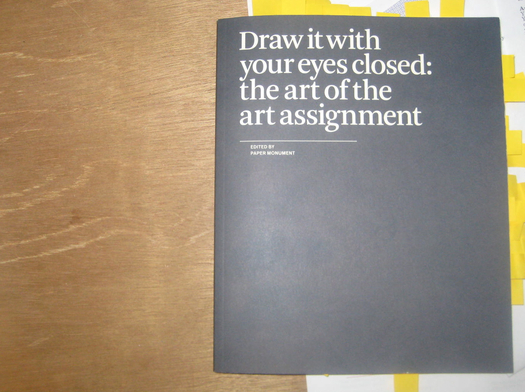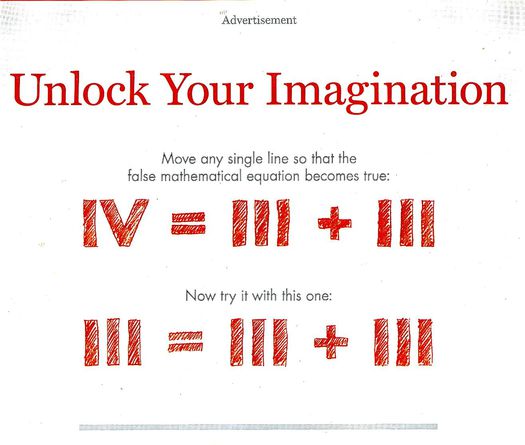
I’ll admit that for various reasons I was not immediately interested in Draw It With Your Eyes Closed: The Art of the Art Assignment, until I Dwight Garner’s enthusiastic review in The Times. All in all, turns out Dwight was right: the book is pretty great. I suspect it would be useful to anyone teaching anything creative, and maybe just as useful, in slightly different ways, to anyone who does anything creative for a living or for fun (or both).
I’m using the word “creative,” which is vague and lately somewhat irritating, for a reason. There seems to be some kind of creativity panic going on: Among other things, this video of John Cleese talking about creativity has been linked by all the popular blogs lately, and Jonah Lehrer’s Imagine: How Creativity Works, has become a best-seller. An advertisement for the latter appeared a few weeks back in The New Yorker, and featured this image:

Really? Is that what creativity looks like? I haven’t read Lehrer’s book, he seems like a smart and nice guy, and is in any case hardly responsible for the way his work is advertised. But I found this this ad profoundly dispiriting, matched as it was with teaser copy along the lines of “Can after-work socializing improve your creativity?” The grimly tactical framework makes it sound like we’re talking about the foolproof way to get six-pack abs now. That’s just a bummer.
In contrast, Draw It With Your Eyes Closed is an almost-impractical mess, and that’s an extremely good thing. The premise is that the editors asked a slew of art teachers to share the best assignments they’d completed or assigned or otherwise encountered. Many did just that, and offer insihtful, funny, or strange, answers. But pleasingly, more than a few did not really follow instructions, and responded with rambling personal essays that may or may not be related to the book’s topic. This is fine, because a) it enhances a bracingly chaotic tone that fits the subject, b) there is in fact plenty here to inspire specific assignments that one could give to students, or to oneself, and c) even some of the assignments that may not seem practical or relevant to any given reader are nonetheless so clever that they’re satisfying just to think about.
I’m hesitant to get too specific about the assignments I liked best, because I don’t think offering one or two or six examples will capture why I enjoyed the book. Reinventing a sport, smashing and rebuilding a piano, discussing an artwork you don’t like but have to admit is good, “colorizing” a Wikipedia entry with words, expressing a theory of painting in the form of a culinary recipe, spending one hour with a single piece of art and recording your thoughts: that’s a random and slapdash sampling. Let's just say that even if you don't like the particular instances I liked, there's probably still material here you'll find engaging. (And to be clear: I of course thought plenty of the assignments and mini-essays were foolish or dull, but that's to be expected in this sort of collection.)
Usefully, the editors include a couple of primary documents of sorts. One is Paul Thek’s “Teaching Notes” questionnaire, which honestly I hadn’t ever heard of. Multiple contributors to Draw It With Your Eyes Closed make reference to it, so I’d jotted it down as something I needed to find — making it a happy surprise to find it right here in the book. The other is John Baldessari’s astonishing list of 109 assignment/ideas, which almost single-handedly blows away the rest of the book in its originality and range. As much as that brain-teaser advertisement depressed me, reading and rereading Baldessari's bravura riff, reproduced in typewritten form with notes and tweaks scrawled upon it, bucked me up: This is what creativity looks like, or should.
When I finished, I went back through the book to take a few notes about some of my favorite assignments, and doing so sparked spinoff ideas, some of them inspired by what's here but tweaked to make it more applicable to the sort of efforts I'm involved in, others extremely different and only distantly related to what I'd read. In fact, the book gave me a fresh appreciation of the assignment as a form. That’s actually the assignment I’d like to steal from Draw It With Your Eyes Closed. Class: create an assignment that is possible, unlikely, intrinsically entertaining, and unforgettable.

